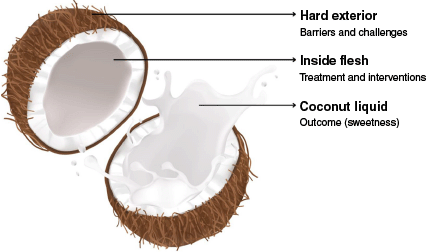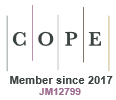Using co-design to reduce Pacific health inequity: the example of NIU, a model to improve gout management
Malakai Ofanoa 1 * , Siobhan Tu’akoi
1 * , Siobhan Tu’akoi  2 , Samuela Ofanoa
2 , Samuela Ofanoa  2 , Felicity Goodyear-Smith
2 , Felicity Goodyear-Smith  3
3
1
2
3
Keywords: co-design, community-based participatory research, gout, health inequities, health model, New Zealand, Pacific Island people, Pacific values.
The use of a co-design approach in health research is a significant milestone in the development and success of Pacific health programmes in Aotearoa New Zealand (NZ). Why? It helps to redress past power imbalances where typically research has been conducted ‘on’ not ‘with’ Pacific people. Co-design is a method with participatory origins that engages end-users throughout all stages of the research process.1 It facilitates a sense of ownership in the new knowledge, to maximise its transfer and use in diverse settings and contexts.2 The implementation of change in response to new information requires enthusiastic champions, and there are none better than those involved in its co-creation.
Different Pacific nations have different descriptions of co-design. In Tonga it is called va kau nofo: va (relationship), kau (join) and nofo (stay with). The term used in Samoa is faufau-fa’atasi, from faufau (build or design) and fa’atasi (together) and in Fiji it is referred to as cakacaka vata: cakacaka (to work) and vata (together). They all embody a collective approach, and when applied in the research setting, refer to participants and researchers creating the research together.
The aim of this paper is to share how our team has used co-design processes in working with the Pacific community. We use the example of the co-designed NIU model, developed as part of a larger project to improve the uptake of urate-lowering therapy (ULT) in Pacific people with gout. Pacific people in NZ have a 14% prevalence of gout, compared with non-Pacific at 4%.3 Taking ULT can prevent gout flares and lead to considerable social4 and health benefits.5,6 However, Pacific people receive less regular ULT (35% versus 44%). Increasing their ULT uptake will therefore reduce this health inequity.7
The NIU model was initially developed by the Pacific Peoples Health Advisory Group (PPHAG)8 and the Pacific Practice-Based Research Network (PPBRN) in collaboration with University of Auckland Pacific researchers (in combination known as the Pacific Research Collective). The PPHAG is a long-standing group comprising community members from diverse Pacific ethnicities and backgrounds, ranging from young people to the retired, which formed to explore what research might be done to improve the health of Pacific people in South Auckland.9 The PPBRN consists of staff members from general practices in South Auckland who care for predominantly Pacific people. The Collective ran a series of workshops generating and then prioritising research questions.
The combined groups identified gout as their top priority concern, and designed a research question around the need for increased use of ULT by Pacific people.10 The study design, strategies, processes, implementation and evaluation involved active PPHAG community participation and involvement of Pacific peoples from the beginning to the end.
As part of co-design workshops to develop interventions, PPHAG and PPBRN identified that there was nothing Pacific about existing interventions in NZ, and that a Pacific model was needed. There was considerable Talanga (talking with a purpose)11 about designing a model by Pacific people for Pacific people. The community decided on using the metaphor of a coconut, but this term often had negative connotations associated with it. Nevertheless, as one community member outlined, ‘Coconut has a lot of qualities such as resilience. It doesn’t have a lot of deep roots and yet it stands through cyclones, its ongoing, new coconuts come up. It’s symbolic to the things we have talked about.’ Therefore, they all agreed on the name NIU, a common translation for coconut in most Pacific countries (Fig. 1).
The acronym is ‘N’ for ‘Nesian’ (includes Polynesian, Melanesian and Micronesian), ‘I’ for Improved and ‘U’ for uptake of urate therapy. The NIU model uses the three main constituents of the coconut to represent different components of the model. The hard exterior of the NIU symbolises the personal challenges and structural barriers that people experience with gout. Gout flares are extremely painful, leading to disruptions in work and family life, with untreated high urate causing chronic joint damage. The inside flesh of the coconut symbolises nourishment and refers to the treatments and interventions that support uptake of ULT. The community discussed the need for improved access to the health system to support taking daily medication, regular blood tests and titration and repeated three-monthly prescriptions. The last component is the coconut liquid, which represents the sweetness of living without gout flares for the rest of their lives.
The co-designed NIU model fits well with the Pacific people’s epistemological view of the world. Their philosophies, cultural values and beliefs were shared and are fundamental to who and what they are. Philosophy refers to a person’s outlook on life, and values refer to a person’s subjective judgement based on their experiences or other sources of knowledge. The values and belief systems of the Pacific peoples determine how and what they think, their attitudes and behaviour and their ways of looking at the world and at their own systems of operation. What they consider and treasure most was key in the development of their co-design model. Their perceptions of health influenced their choice of strategies to address gout. When people identify and address their most felt needs, their hearts, commitment and support can then co-exist in all aspects of the programme. Pacific people feel strongly that they own this model. This has helped to improve the creation of a Pacific intervention and its subsequent dissemination and utilisation.
Models or frameworks serve to translate values, beliefs and philosophies to a system that provides a method, structure, design and/or a pathway for action within a socio-cultural and political context. The NIU model is one of a range of existing Pacific models and frameworks that can assist with the engagement of Pacific communities to improve their health and wellbeing, both in NZ and throughout the Pacific region.12–15 It is based on Pacific philosophies and principles of oneness, collectivity, reciprocity and supporting the true involvement and engagement of people. Pacific models often use common activities such as weaving or fishing, or objects such as Pacific houses or canoes, as metaphors in health promotion. These representations often support comprehension of health issues. The NIU model is specific to gout and tailored to help people understand that taking ULT can prevent living with gout pain and lead to a sweet symptom-free life.
The use of the NIU model transcends the traditional top-down health engagement and health promotion approaches that victimise and blame populations. Pacific people need cogent answers to such questions to improve their health and wellbeing. This viewpoint paper suggests that co-design approaches are a way forward to better meet current health needs of Pacific people in NZ and the Pacific region.
Conflicts of interest
Felicity Goodyear-Smith is an Editor of the Journal of Primary Health Care but was not involved in the peer review or any decision-making process for this paper. The authors have no further conflicts of interest to declare.
Declaration of funding
The gout project was funded by the Health Research Council of New Zealand, Reference no. 21/452.
References
1 Slattery P, Saeri AK, Bragge P. Research co-design in health: a rapid overview of reviews. Health Res Policy Syst 2020; 18: 17.
| Crossref | Google Scholar | PubMed |
2 Goodyear-Smith F. Collective enquiry and reflective action in research: towards a clarification of the terminology. Fam Pract 2017; 34(3): 268-71.
| Crossref | Google Scholar | PubMed |
3 Guillén AG, Te Karu L, Singh JA, et al. Gender and ethnic inequities in gout burden and management. Rheum Dis Clin North Am 2020; 46(4): 693-703.
| Crossref | Google Scholar | PubMed |
4 Bursill D, Dalbeth N. What is the evidence for treat-to-target serum urate in gout? Curr Rheumatol Rep 2018; 20: 11.
| Crossref | Google Scholar | PubMed |
5 Sumpter NA, Takei R, Cadzow M, et al. Association of gout polygenic risk score with age at disease onset and tophaceous disease in European and Polynesian men with gout. Arthritis Rheumatol 2023; 75(5): 816-25.
| Crossref | Google Scholar | PubMed |
6 Cai K, Wu B, Mehta S, et al. Association between gout and cardiovascular outcomes in adults with no history of cardiovascular disease: large data linkage study in New Zealand. BMJ Med 2022; 1(1): e000081.
| Crossref | Google Scholar | PubMed |
7 Ofanoa S, Ofanoa M, Tu’akoi S, et al. Pacific community’s perceptions on how to improve uptake of urate-lowering therapy for Pacific gout patients. Int J Equity Health 2025; 24(1): 91.
| Crossref | Google Scholar | PubMed |
8 Lamont R, Fishman T, Goodyear-Smith F. Travelling companions: a story told by a patient and her doctor. Br J Gen Pract 2018; 68(671): 282.
| Crossref | Google Scholar |
9 Lamont R, Fishman T, Sanders PF, et al. View from the canoe: co-designing research Pacific style. Ann Fam Med 2020; 18(2): 172-5.
| Crossref | Google Scholar |
10 Ofanoa M, Ofanoa SM, Heather M, et al. Design and implementation of a Pacific intervention to increase uptake of urate-lowering therapy for gout: a study protocol. Int J Equity Health 2021; 20(1): 262.
| Crossref | Google Scholar |
11 Ofanoa M, Percival T, Huggard P, et al. Talanga: the Tongan way enquiry. Sociol Study 2015; 5(4): 334-40.
| Google Scholar |
13 Goodyear-Smith F. ‘Ofanoa M. Fa’afaletui: A Pacific Research Framework. J Mix Method Res 2021; 16(1): 34-46.
| Crossref | Google Scholar |
14 Malungahu M, Ofanoa S, Ofanoa M, et al. Lalanga: weaving the Kakala with constructionist grounded theory. Int J Health Stud 2017; 5(4): 48-52.
| Crossref | Google Scholar |
15 Te Ava A, Page A. How the Tivaevae Model can be used as an Indigenous methodology in Cook Islands education settings. Aust J Indig Educ 2020; 49(1): 70-6.
| Crossref | Google Scholar |



